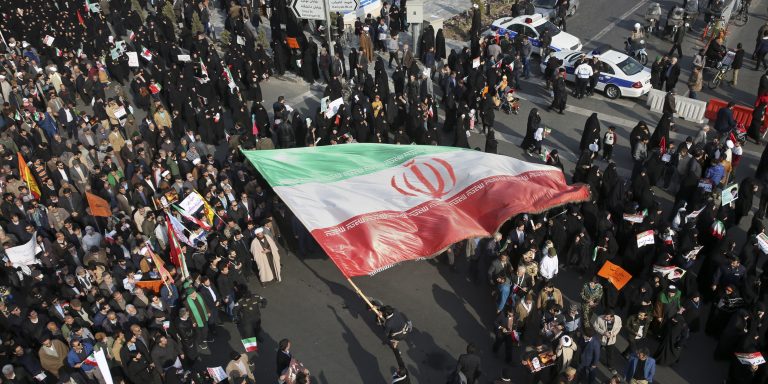INTELBRIEF
February 14, 2018
TSC IntelBrief: Iran Under Pressure

- Several European countries are joining United States efforts to compel Iran to limit its ballistic missile program as a means of keeping the U.S. in the 2015 multilateral Iran nuclear agreement.
- Iran has reduced its harassment of U.S. ships in the Persian Gulf out of concern that the Trump Administration might use deadly force against such challenges.
- The U.S. retention of troops in Syria, coupled with Israeli military action, constraints Iran’s ability to use Syria as a secure base from which to help its key regional allies, President Bashar al Assad of Syria and Lebanese Hizbollah.
- Recent major protests in Iran and continuing low levels of unrest are exposing regime vulnerabilities and might force it to retrench its regional activities.
Iranian leaders and their policies are being challenged on a wide range of fronts, in some cases as a result of actions by the Trump Administration and in other cases by the regime’s own failings. Most significantly, several European countries are responding to President Trump’s threats that the inadequacies of the landmark 2015 nuclear agreement be addressed, or the United States will leave the accord and re-impose broad secondary sanctions on Iran. The European countries insist that the accord is accomplishing its main aim of limiting Iran’s nuclear program and should be preserved as is.
Still, in late January, Secretary of State Rex Tillerson reached an agreement with Britain, France, and Germany (the three EU countries that negotiated the accord alongside the U.S., Russia, and China) to form working groups to address the nuclear accord’s weaknesses. The working groups are to also try to engage Tehran on the issues to be addressed. This U.S.-European effort is certain to focus on how to verifiably limit Iran’s development of ballistic missiles, and in particular prevent Iran from developing a missile of intercontinental range, which Iran does not now possess.
On regional fronts, Iran’s activities are coming under significant new constraints. Since the fall of 2017, Iran has refrained from conducting ‘high-speed' intercepts’ of U.S. naval vessels in the Persian Gulf. This restraint is reportedly a reaction to indications that President Trump is considering authorizing the use of deadly force against Iranian ships that undertake such threatening actions. In Syria, the U.S. decision to retain indefinitely about 2,000 troops supporting Kurdish and Arab forces in the east and north preclude Iran from helping the Assad regime recapture those territories. In early February, an advance by Iran-backed forces toward U.S. positions was repelled by U.S. air and artillery strikes.
In southern Syria, Israel has repeatedly used air strikes to back up its insistence that Iran not entrench its control of areas near the Golan Heights border with Israel or build missile factories or bases in Syria. On February 10, Israel undertook extensive air operations against Iranian and Syrian military positions and downed an Iranian drone over Israeli territory. Should conflict escalate, Israel’s highly capable air force can potentially do severe damage to Iran’s infrastructure in Syria.
Iran’s regional adversaries also perceive new regime vulnerabilities as a result of the December 2017-January 2018 protests in Iran – unrest that continues to simmer as women protest enforcement of the strict public dress code. Many demonstrators expressed anger at the diversion of Iran’s financial resources to regional interventions rather than to address domestic economic deprivation. The unrest might compel the regime to retrench its regional activities somewhat in order to preserve domestic harmony. The domestic and regional pressure on Iran is altering longstanding analysis that Iran has attained an unassailable regional strategic position.
.
For tailored research and analysis, please contact: info@thesoufancenter.org
[video width="960" height="540" mp4="https://thesoufancenter.org/wp-content/uploads/2018/02/Final-Edit-1-131.mp4" poster="https://thesoufancenter.org/wp-content/uploads/2018/02/AP_18004515647233.jpg"][/video]